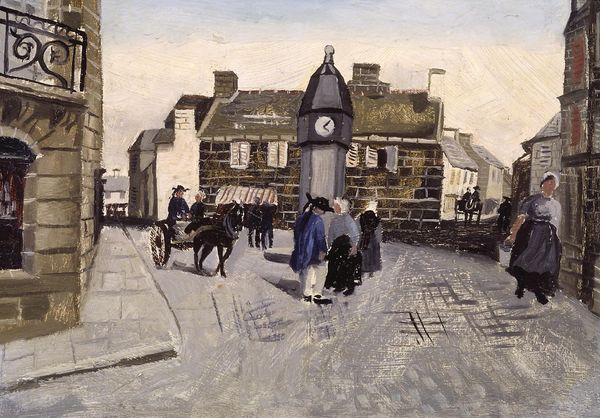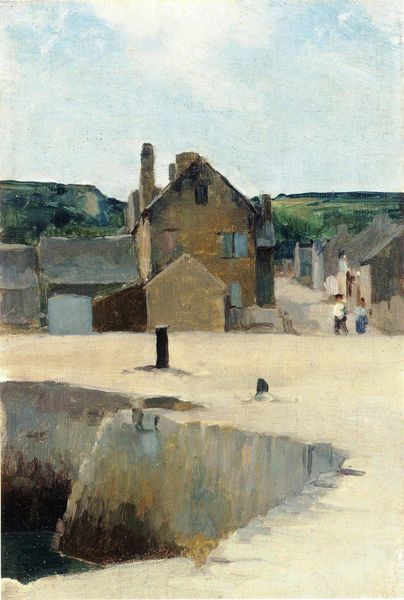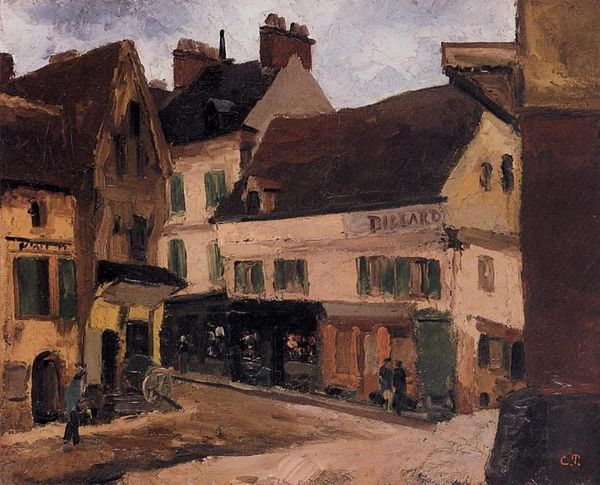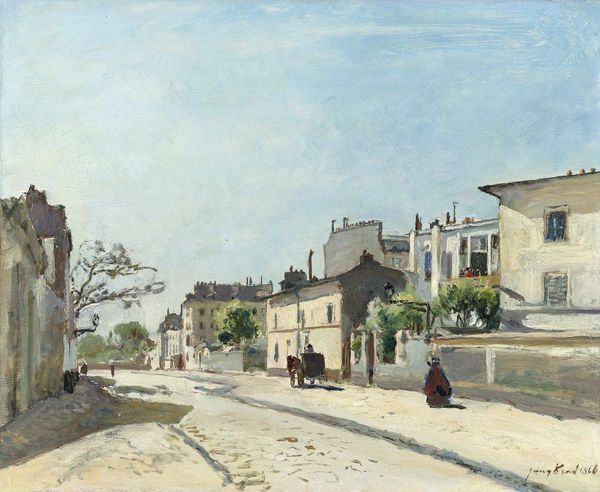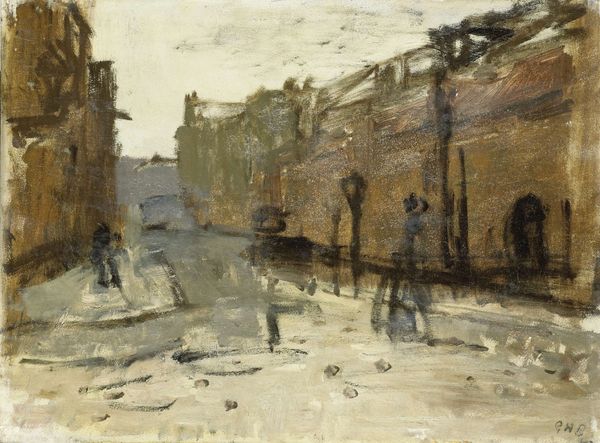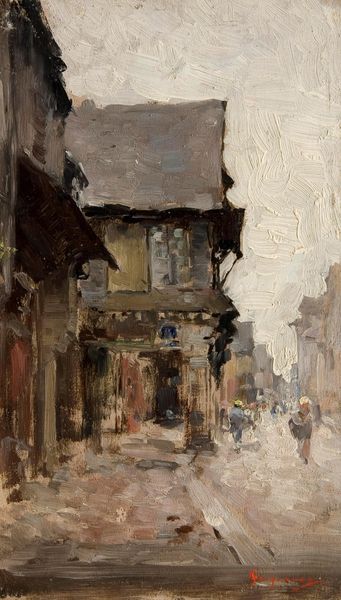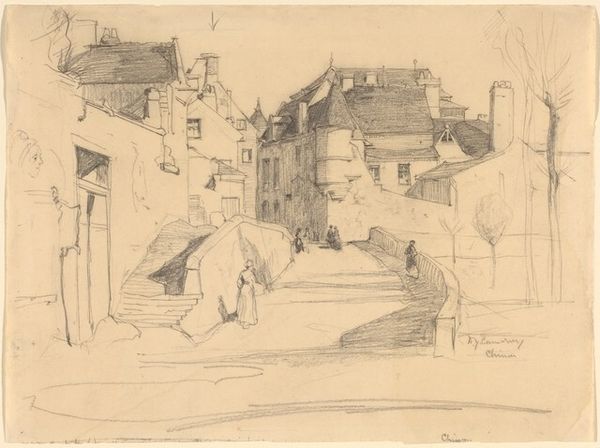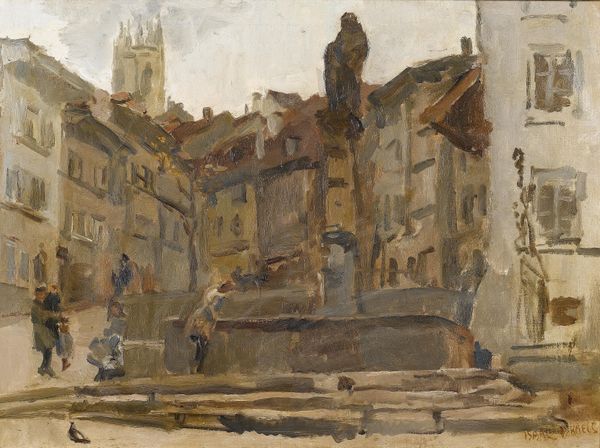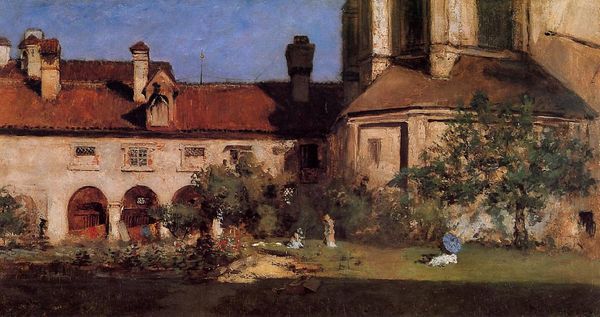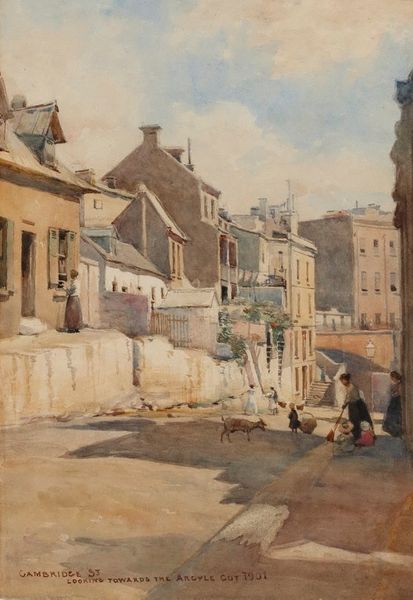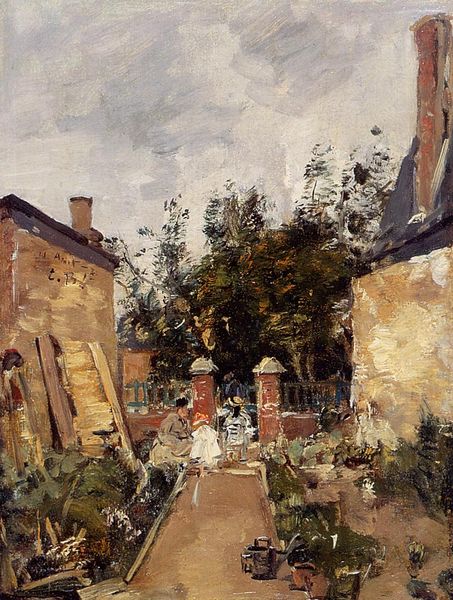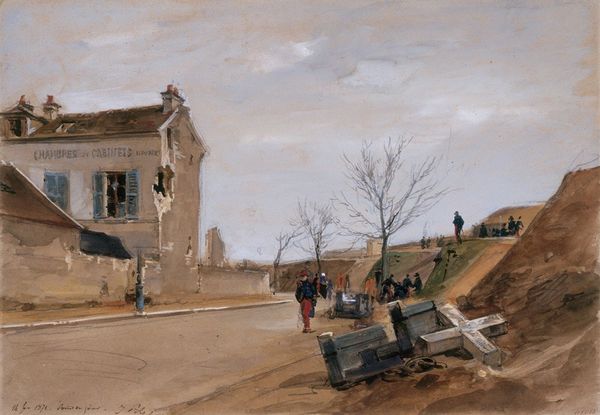
Copyright: Public domain
Curator: Looking at this painting, "North Berwick Sands" by Samuel Peploe, completed in 1896, I am immediately struck by the light. The almost monochromatic palette really concentrates the eye. Editor: It's evocative, isn't it? There’s something about the muted tones that creates a real sense of place, though a bit somber. A row of figures sitting along what appears to be a beach, set against somewhat drab buildings and what I assume is a church steeple, has a sense of resigned existence to me. It reads a little alienated, wouldn't you say? Curator: Well, Peploe was certainly interested in capturing modern life, and his connection to the Impressionist and Realist movements encouraged this snapshot-like scene that rejects traditional academic techniques, in favor of immediacy and what was visually and actually apparent at the time and location of creation. It's painted "en plein air", you know, directly in front of the subject. So in a way, the muted palette simply documents the grayness of that environment. Editor: I find the brushstrokes quite telling; rough, visible. As if the image itself is struggling to resolve itself. Look how indistinct the faces of the figures are—they seem to be swallowed by the backdrop, not individual, really a blur of the industrial revolution! It does force us to consider the social conditions of these turn-of-the-century seaside residents. This beach may have very well been a contested area and perhaps the location of their residence; or not. We cannot be certain of anything from these representations, of course. It demands interrogation. Curator: It speaks to the democratizing function of art at that moment. By capturing scenes from everyday life in this location, Peploe brings recognition and awareness of what were previously ignored social strata, albeit indirectly by rendering an impression. Editor: Absolutely. While, undoubtedly, the "somberness" and "blurring of figures" also reveals some things to be desired regarding what was a seemingly exclusive domain. What are they, and how do we recognize the absence. It gives you pause and calls attention to what has been concealed, but not intentionally forgotten, in representations of this area. This gives cause to continue interrogating artwork beyond the moment of impression, and throughout time as perspective adjusts. Curator: Indeed. Viewing artwork in person allows opportunities for broader and continued critical discussion of representation throughout space and time. I’m pleased to see such a thought-provoking and impactful painting garner well deserved recognition.
Comments
No comments
Be the first to comment and join the conversation on the ultimate creative platform.
